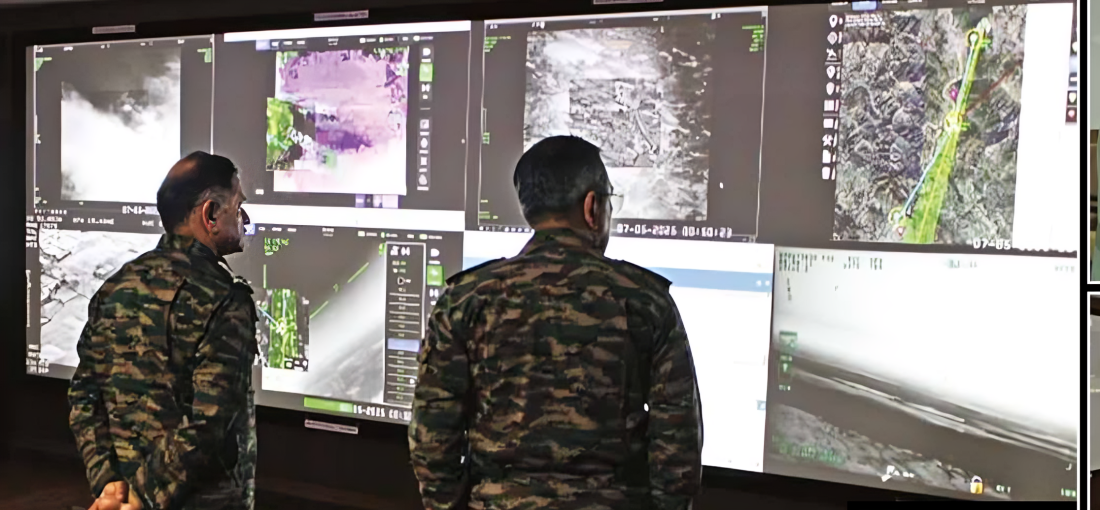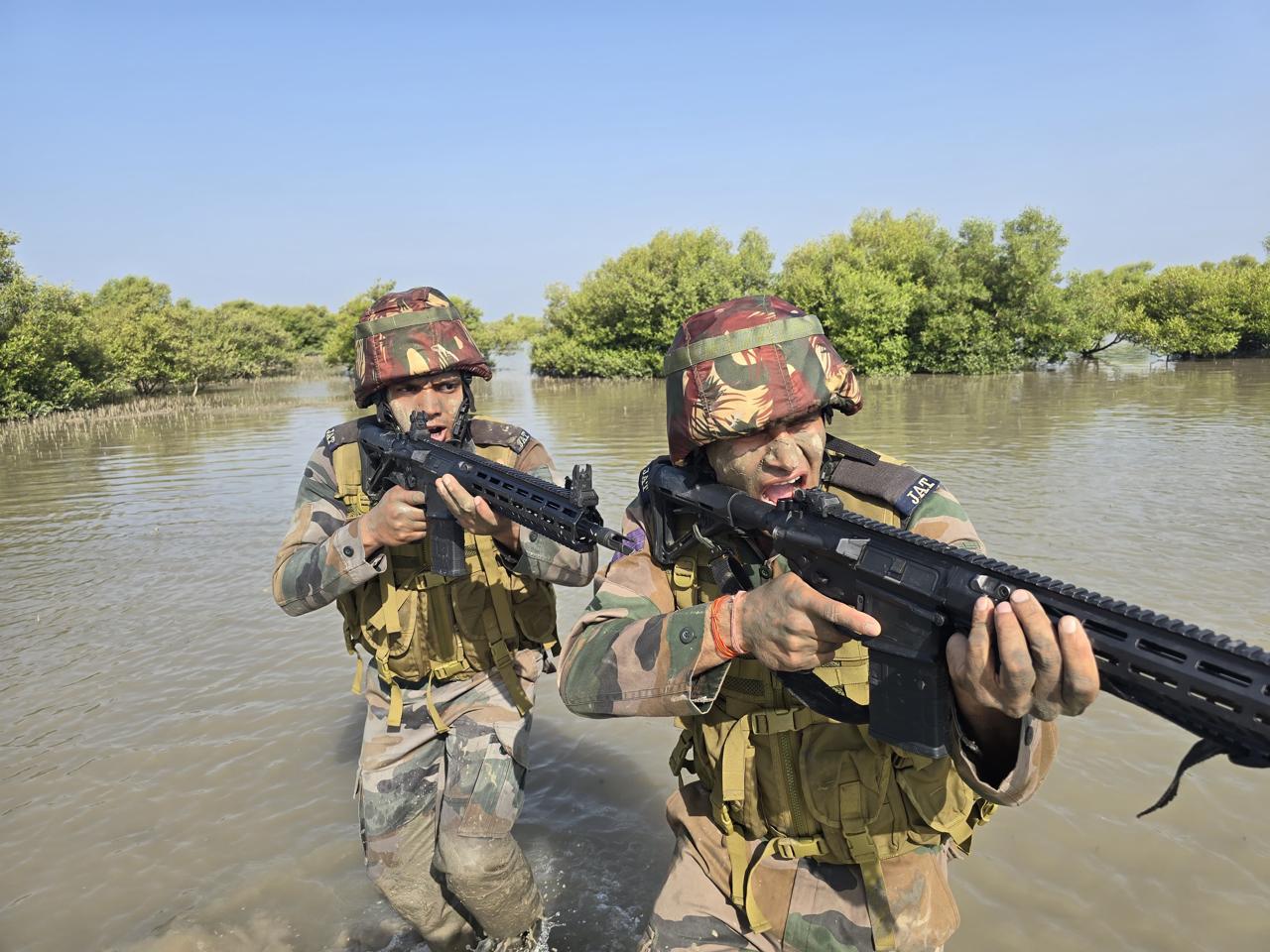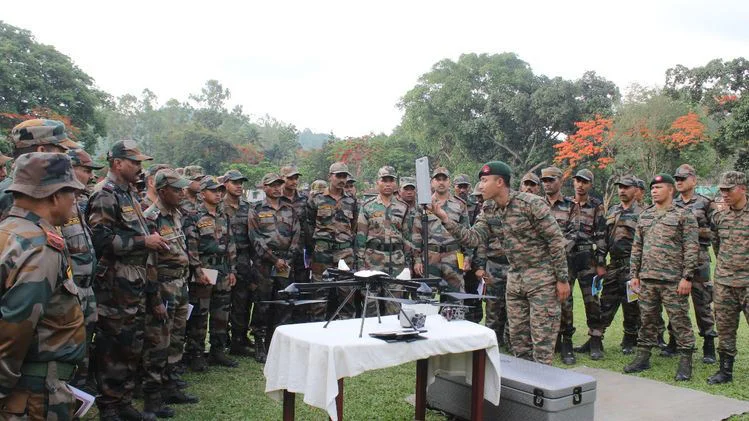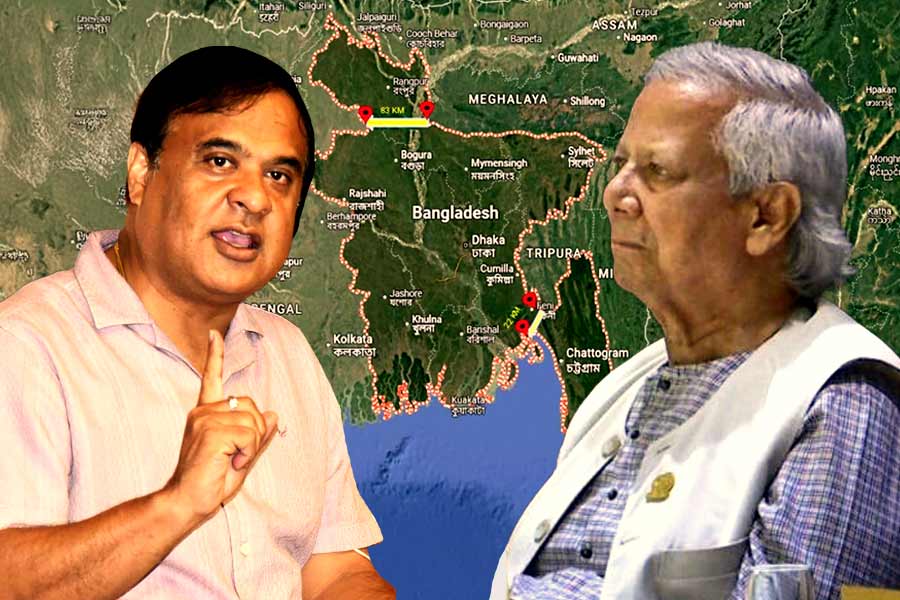Colonel Sofiya Qureshi’s Family Showers Petals on PM Modi During Gujarat Roadshow
Prime Minister Narendra Modi received a heartfelt gesture of admiration during his roadshow in Gujarat’s Vadodara on Monday, as the…
New Operation Sindoor Images Reveal Three Service Chiefs Overseeing May 7 Airstrikes
The Indian Army has officially released a detailed booklet for its personnel on Operation Sindoor, offering a comprehensive look at…
Indian Army’s Konark Corps Lead Major Multiagency Exercise in Kutch’s Creek Sector
In a significant step to bolster national security and inter-agency coordination, the Indian Army's Konark Corps, through its Bald Eagle…
Indian Army and Assam Rifles Conduct Joint Training Exercises in Arunachal Pradesh
In a concerted effort to enhance inter-force coordination and operational synergy, the Indian Army and the Assam Rifles have initiated…
Assam CM Highlights Bangladesh’s Vulnerable Corridors Amid Rising Concerns Over Siliguri
Assam Chief Minister Himanta Biswa Sarma has brought to light Bangladesh’s own strategic vulnerabilities, highlighting two critical geographic corridors that…
CRPF Personnel Moti Ram Jat Arrested by NIA in Delhi for Espionage Linked to Pakistan
In a major breakthrough, the National Investigation Agency (NIA) has arrested a Central Reserve Police Force (CRPF) personnel in Delhi…






